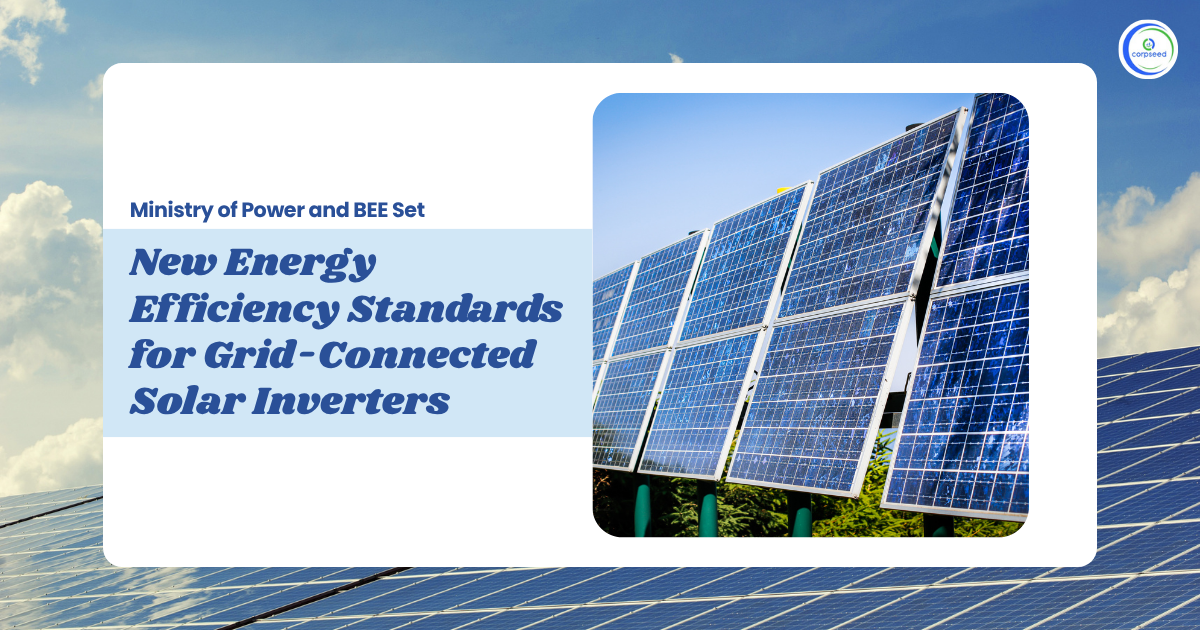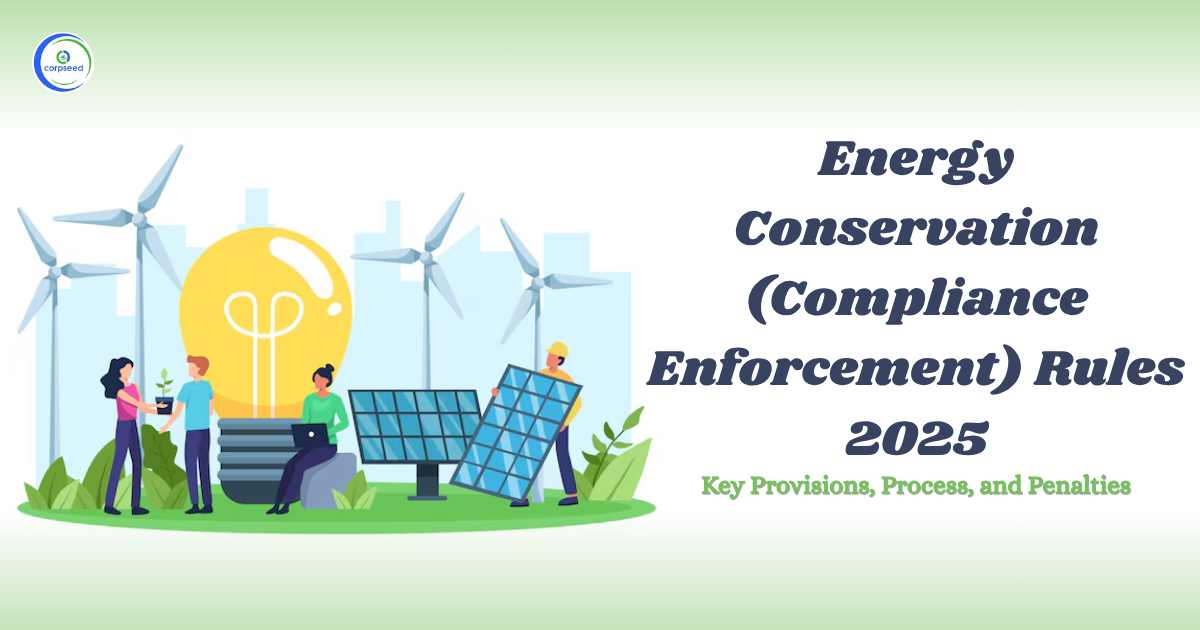Introduction: Mandatory Product List for BEE Registration
The Bureau of Energy Efficiency ensures that household electrical products are in accordance with the published guidelines and standards by the bureau. In May 2006 the Ministry of Power launched the star labeling program which covered a total of 30 different electrical products which were further bifurcated into 2 categories. One product category consists of 10 products under mandatory registration, for which the manufacturer, trader, the importer has to undergo the registration process as a mandatory requirement. The second category consisting of 20 products falls under voluntary registration.
The main objective of the Bureau is to ensure that the electrical products that are in the Indian market are highly energy efficient and the end consumer gets a choice before buying. With the label placed on the product, the consumer gets to know the energy efficiency of the product by seeing the stars on it. The label acts as an energy efficiency guide from which the user can identify various details of the product. More the stars on the label the higher its energy efficiency is. The fewer the stars on the label, the less energy efficient the product is and more energy will be consumed making it a burden on the consumer’s pocket.
However, the 5-star rated products are costlier as compared to 1 or 2-star rated products. But if we talk about the long-term cost-saving, the 5-star product will save way more as compared to 1 or 2 stars.
Also, almost every alternative year the Bureau revises the criteria of star rating for each product to make them more and more energy-efficient for the end consumer. And to remain in the race, the manufacturers have to ensure that they timely do the necessary R&D and further changes in their product to comply with the revised criteria of star rating.
Below mentioned is a prime example of a star rating label for a room air conditioner which depicts all the details which are mentioned on the label and which are visible to the consumer. Also, as per the bureau, it is mandatory for the manufacturer to affix the star rating label product both on the packaging and the product itself.
The mandatory List of Products for BEE Registration are as below:
- Frost Free Refrigerator
- Direct Cool Refrigerator
- IAC (Inverter Air Conditioner)
- RAC (Cassettes, Floor Standing)
- Room Air Conditioner
- LED (Light Emitting Diode)
- Electric Water Heater (Geyser)
- Color TV
- Distribution Transformer
|
S.No |
Product Category |
Product Description |
|
1 |
Frost Free Refrigerator |
Freezers with a dynamic cooling system are referred to as Frost Free. There is no ice on the interior walls, and you don't have to do anything with the defrost. Freezers with direct or fan-assisted cooling systems are referred to as automatic defrost. The internal freezer walls have ice build-up that must be removed on a regular basis. The liquid that floats around in your freezer is called frost. When it gets cold enough, moisture condenses on the coldest surface it can find, which is usually the freezer's walls. When you open and close the freezer door, moisture comes inside. The majority of modern freezers are frost-free. Frost-free freezers reduce frost by boosting temperatures and preventing the formation of ice from free-floating water particles. |
|
2 |
Direct Cool Refrigerator |
Natural convection from chilled surfaces in the insulated compartment that is being cooled produces the cooling effect in direct-cool refrigerators. When water vapour comes into touch with a chilled surface, it freezes. As a result, unlike frost-free units, direct-cool units require interior defrosting by hand. Direct cool is less expensive to manufacture and operate since it uses less energy. |
|
3 |
IAC (Inverter Air Conditioner) |
The ability of an inverter air conditioner compressor to modify the speed of its motor to match the temperature of the room. Inverter air conditioners reduce the speed of the compressor motor once a room is cool to conserve electricity and refrigerant. Non-inverter motors, on the other hand, only run at maximum speed until the room temperature exceeds the target temperature. This on-and-off cycle generates more noise and uses more energy. While non-inverter air conditioners may be less expensive, inverter air conditioners run quietly and deliver more consistent, energy-efficient cooling comfort, resulting in superior long-term value. |
|
4 |
RAC (Casettes, Floor Standing) |
Cassette split system units work similarly to wall-hung split system units, with the exception that cassettes are put in the ceiling rather than on the wall. The indoor unit lies flat against your ceiling and delivers conditioned air on two, three, or four sides. A cassette air conditioner's outdoor unit is positioned outside, similar to how a traditional wall-mounted split system unit would be. Cassette players are quite unobtrusive and come in a variety of sizes and capacities, so you have a lot of flexibility in deciding where to put one. Cassette players, on the other hand, are better suited to larger spaces. |
|
5 |
Room Air Conditioner |
The most basic sort of air conditioner is a window air conditioner. It is a single unit that contains all of the parts and components in a single box or case. This type of air conditioner is typically hung or installed in a window and connects to a standard electrical socket. It's practical because it can be moved from window to window and runs independently of the home's HVAC system. The basics of operation for a window air conditioner are the same as for any other form of air conditioning system. It makes use of refrigeration capabilities to remove heat and humidity from a space while allowing cool air to circulate. A thermostat, a fan or blower, refrigerant tubing, a compressor, an evaporator coil, and a condenser coil are the essential components. |
|
6 |
LED (Light Emitting Diode) |
The term "light emitting diode" refers to a device that emits light. In comparison to incandescent light bulbs, LED lighting products produce light up to 90% more effectively. How do they function? A microchip receives an electrical signal, which ignites the tiny light sources known as LEDs, resulting in visible light. The heat generated by LEDs is absorbed into a heat sink to prevent performance difficulties. LED lighting products have a different useful life than other light sources such as incandescent and compact fluorescent lighting (CFL). LEDs do not often "burn out" or "fail." Instead, they undergo 'lumen depreciation,' in which the LED's brightness gradually fades over time. Unlike incandescent bulbs, the "lifetime" of LEDs is calculated based on a projection of when the light output will drop by 30%. |
|
7 |
Electric Water Heater
|
The water geyser's core premise is simple. It's quite straightforward. The water kept in a storage tank is heated using an electric heating element. The main difference between it and a typical immersion-type water heater is that it can adjust the temperature of the water automatically by controlling the operation duration of the heating elements linked with the geyser, which is not feasible with a standard immersion-type water heater. For a big amount of water, a geyser heater is employed. On the market, geysers with capacities ranging from 20 to 90 liters can be found. |
|
8 |
Color TV |
A flat panel LCD TV that employs light-emitting diodes (LEDs) for its backlighting instead of cold cathode fluorescent lamps (see CCFL). LED TVs provide deeper blacks and more intense color than fluorescent TVs because they are smaller, more energy efficient, and have a wider optical range. Sony introduced the first LED television in 2005. Despite the fact that an LED TV is actually an LCD TV with LED backlighting, the industry decided to call them LED TVs to avoid terms like "LED backlit TV" or "LED-based LCD TV." The majority of televisions sold today are LED televisions. |
|
9 |
Distribution Transformer |
A distribution transformer, also known as a service transformer, is a transformer that delivers the last voltage transformation in an electric power distribution system, stepping down the voltage in distribution lines to the voltage utilized by the consumer. [1] AC power distribution became possible with the creation of a practical efficient transformer; a system incorporating distribution transformers was demonstrated as early as 1882. Pole-mount transformers are those that are installed on a utility pole. Distribution transformers are known as distribution tap pad-mount transformers because they are installed on concrete pads and locked in steel cases if the distribution lines are located at ground level or underground. |
|
10 |
Tubular Florescent Lamp
|
A fluorescent lamp, often known as a fluorescent tube, is a low-pressure mercury-vapor gas-discharge lamp that produces visible light by fluorescence. An electric current in the gas stimulates mercury vapor, which creates short-wave ultraviolet light, which causes the lamp's phosphor coating to glow. In comparison to an incandescent lamp, a fluorescent lamp turns electrical energy into usable light far more efficiently. Fluorescent lighting systems have a luminous efficacy of 50–100 lumens per watt, which is several times that of incandescent bulbs with equivalent light intensity. |
ISI Registration
ISI Mark registration is a quality assurance process managed and provided by BIS. It guarantees that a product meets Indian safety and quality standards, making it easier for consumers to trust. ISI Mark certification increases confidence and compliance across industries in India.
BIS Registration
BIS Registration ensures that products meet quality and safety standards as set by the Bureau of Indian Standards (BIS). It involves submitting an application, undergoing testing, and obtaining the BIS certification mark. This process helps protect consumers and ensures product reliability
BEE Registration
The BEE is a statutory body under the Energy Conservation Act, 2001. It is regulated under the Ministry of Power, Government of India. In today’s time, Energy efficiency has become a crucial part of product manufacturing. Obtaining a BEE certificate ensures compliance while maintaining the government standards.
This portion of the site is for informational purposes only. The content is not legal advice. The statements and opinions are the expression of author, not corpseed, and have not been evaluated by corpseed for accuracy, completeness, or changes in the law.
BOOK A FREE CONSULTATION
Get help from an experienced legal adviser. Schedule your consultation at a time that works for you and it's absolutely FREE.






.webp)



